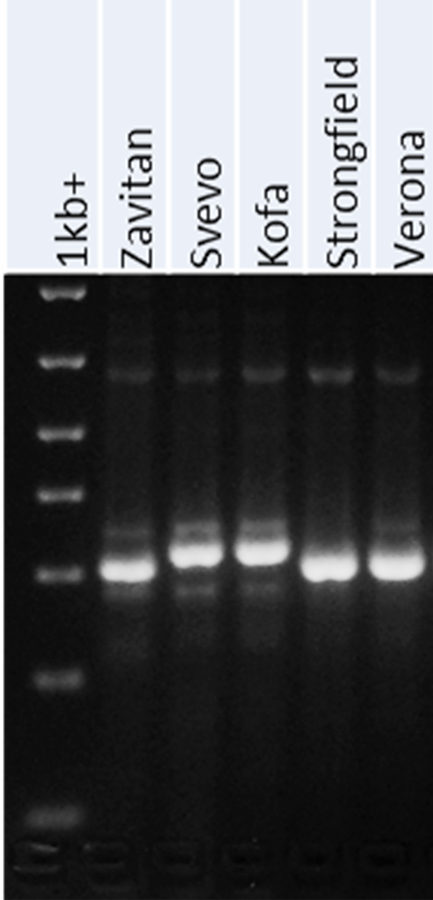Contributed by Krysta Wiebe and Curtis Pozniak
Cadmium (Cd) is a toxic metal that is naturally present in trace quantities in almost all soils. Cadmium-contaminated foods are the dominant source of human exposure to environmental Cd, with cereals and vegetables contributing the majority of dietary Cd. The Codex Alimentarius Commission of FAO/WHO has set a level for Cd in wheat grain of 0.2 mg/kg (CODEX STAN 193-1995, 2009). Some durum wheat (Triticum turgidum L. var durum) varieties have the genetic potential to accumulate Cd in grain to levels that exceed the Codex standard. Genetic variation for grain Cd accumulation exists in durum and breeding for low grain Cd concentration is a target of durum wheat breeding programs globally (1).
In durum wheat, Cd accumulation is governed by a QTL designated Cdu1, which has been localized to chromosome 5BL. Marker assisted selection is preferred for selecting breeding lines expressing low Cd as measuring grain Cd is laborious and expensive relative to PCR-based assays, but the molecular markers available for Cdu1 before 2019 were either dominant or the protocol required extra steps. Maccaferri et al. (1) postulated the gene TRITD5Bv1G197370, which encodes a P1B-type heavy-metal ATPase 3 (HMA3), as a likely candidate gene for Cdu1. Comparative sequence analysis of TRITD5Bv1G197370 (simplified to TdHMA3-B1) revealed a 17-bp duplication in the first exon that creates two alleles, TdHMA3-B1a, present in the wild emmer wheat accession Zavitan (associated with a functional variant of Cdu1 responsible for low grain Cd) and TdHMA3-B1b in the modern durum cultivar Svevo (non-functional; high grain Cd).
Markers for Cdu1
The alternative alleles, TdHMA3-B1a and TdHMA3-B1b, can be differentiated by Xusw59, a PCR marker that amplifies the region including the 17-bp duplication.
Primers
usw59-F 5'- TTCTTGCTGTTCATCCGCCTG -3'
usw59-R 5'- AATACGGGACTGCGAGACGGC -3'
PCR mix
Master Mix 1X (25uL):
10X Invitrogen buffer 2.5 𝜇L
50mM MgCl2 0.6 𝜇L
5mM dNTPs 1.0 𝜇L
F and R Primers (10 𝜇M) 1.0 𝜇L
DMSO 0.5 𝜇L
Taq (5U/𝜇L) Invitrogen 0.5 𝜇L
H2O (sterile) 17.9 𝜇L
DNA (100 ng/𝜇l) 1.0 𝜇L
PCR steps
- 95°C, 5 min
- 95°C, 30 sec
- 63°C, 30 sec
- 72°C, 1 min
- Go to step 2, 34 more times
- 72°C, 10 min
- Hold 4°C
Expected products

the forward primer has an M13 tag. making the amplicons 19bp larger*)
- Upper Band (297bp): cultivars Kofa and Svevo (High Cadmium)
- Lower Band (280bp): cultivars Zavitan, Strongfield and Verona (Low Cadmium)
References
1. Durum wheat genome highlights past domestication signatures and future improvement targets. Maccaferri M, Harris NS, Twardziok SO et al. In: Nature Genetics, 2019, 51:885-895. DOI:10.1038/s41588-019-0381-3
